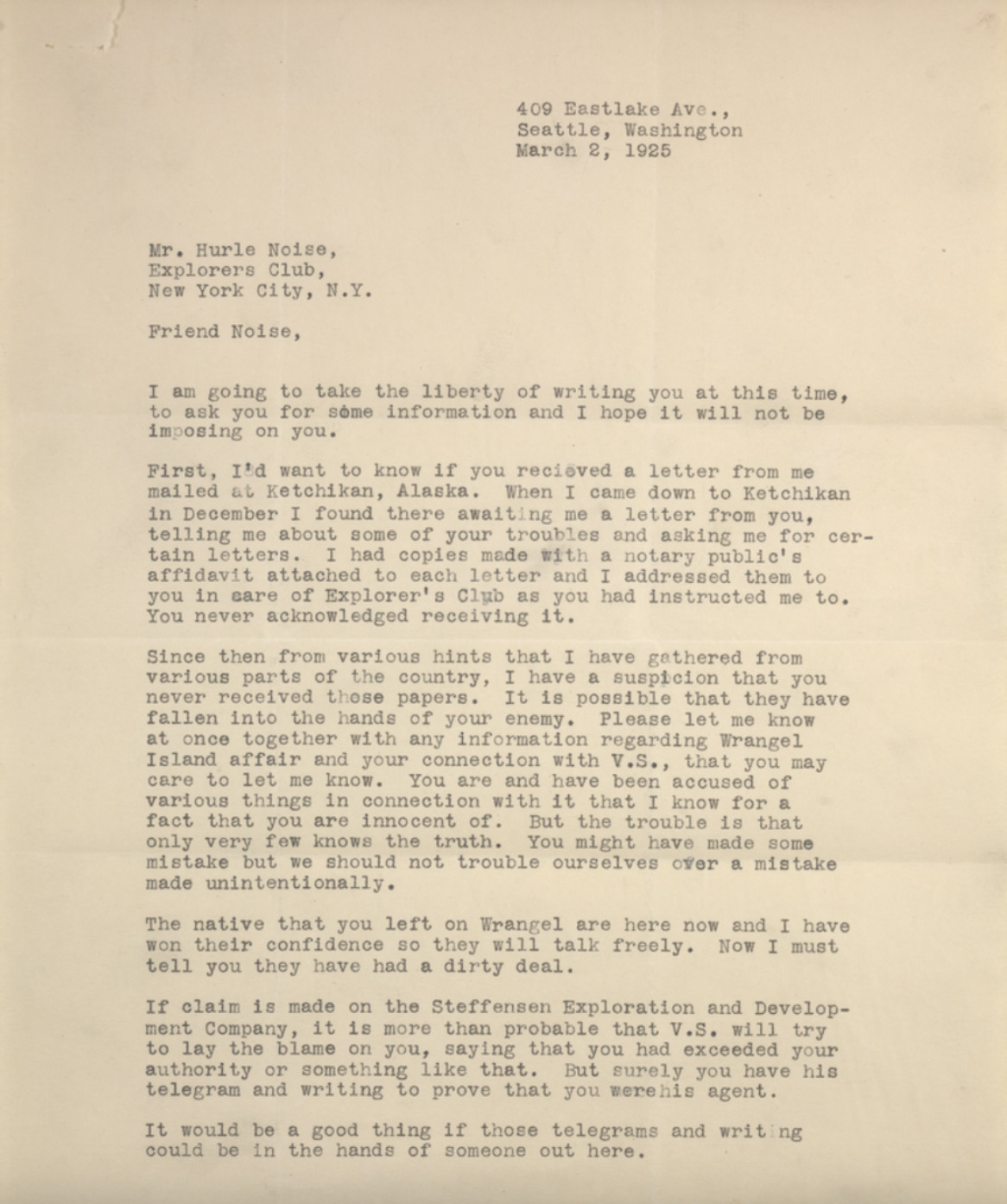Harold Noice Conclusion
Ultimately, the failure of the Wrangel Island expedition marked the downfall of Noice and Stefansson’s mentorship. Upon his return South, Noice began painting a story of the failures of the expedition and, more importantly, who he believed to be at fault. This placed him in direct opposition to Stefansson, who was beginning to face the fallout from the expedition.
Noice reached out to the media and issued a statement of the true story behind the Wrangel Island disaster – the inexperience of the expedition members, the failure of the Teddy Bear to reach Wrangel Island, and the ultimate death of 4 of the expedition members. This narrative, according to Noice, was based on his interview with Ada Blackjack upon her rescue, and his reading of the diaries that had come into his possession during the rescue
In spite of this, Stefansson continued to take great efforts to contain the damage to his reputation, both publicly and privately. In a letter to Captain Bernard in 1924, Stefansson claimed that the newspaper interviews Noice had conducted “do not correspond to the diary itself”. He also claims that Noice had torn out a number of pages from the diaries, and that upon retrieving these pages, it became clear that “many of the things which he alleged were in the diary are not actually in it” [1]. Yet, despite Stefansson’s efforts, Bernard’s opinions of Noice could not be swayed. Later that year, Bernard warned Noice to “be careful” in his dealings with Stefansson since “he has now reached that stage where publicity, no matter how he gets it, does him good” [2].
Yet the story is more complicated than a black and white view of Stefansson as a villain, the explorers as victims, and Noice as the hero who exposed these injustices, despite Stefansson’s attempts to suppress the truth. In Stefansson’s Adventure of Wrangel Island, he includes a letter from Noice in October of 1924 apologising for the “incorrect impressions” he left with the media, citing a “complete [mental] breakdown” induced by the tragedy and his desire to paint the Arctic as a desirable place [3].
But there still seems to be more to the story. In March of 1925, a letter from Bernard to Noice refers to Stefansson as Noice’s “enemy,” who Bernard believed was responsible for blocking correspondence between the two and slandering Noice’s name in the public eye [4]. Yet if Noice’s apology had been genuine, why would Bernard have sent this letter?
Regardless of which narrative the reader chooses to believe, one thing is clear: Stefansson and Noice’s relationship never recovered. Stefansson, who once viewed Noice “as a friend and protege,” was now considered an “enemy”. The Wrangel Island expedition marked a pivotal moment in Arctic exploration history, but also left a lasting scar on the personal and professional relationship between Noice and Stefansson, and the legacies they left behind

